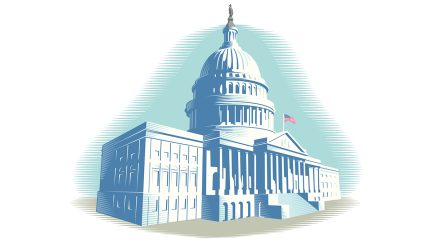Never miss a story — sign up for PLANADVISER newsletters to keep up on the latest retirement plan adviser news.
Managed Accounts Show Mass Potential, Need Better Benchmarking
Plan sponsors want personalized advice for participants, but many may need clearer guidance to implement managed accounts, according to new research issued by Cerulli and Edelman Financial Engines.
In recent conversations consultancy Cerulli Associates had with defined contribution plan sponsors, one key theme was repeated: the desire to offer personalized, one-on-one advice to participants.
“When it comes to personalization within DC plans, plan sponsors really put a premium on being able to give their participants [a financial professional] to speak with in a one-on-one capacity,” says Shawn O’Brien, Cerulli’s director of retirement. “This is something that a lot of them really emphasized and felt strongly about providing to their participants.”
The challenge in the retirement industry is providing that service at scale to individuals of varying—meaning not always high—asset levels. In conversations O’Brien and his team had this year with 19 plan sponsors with at least $250 million in assets—some with more than $1 billion—there was a consistent desire for personalized guidance, but no consensus on how they’d like it provided.
“The difficulty that the industry deals with is providing that one-on-one consultation to the masses,” O’Brien says. “It’s not the most lucrative endeavor on a per-head basis. Figuring out how to do that in an economically reasonable way is obviously something advice providers need to keep in mind.”
In research released Wednesday by Cerulli and Edelman Financial Engines, the authors pointed to managed accounts as a viable and growing option to provide personalized services to participants. Edelman Financial Engines is, notably, one of the largest managed account provider in 401(k) plans in the U.S.
But while plan advisers and sponsors often seek to benchmark managed account offerings—along with providers such as Edelman Financial Engines, Morningstar Inc. and Stadion Money Management, owned by Smart—it’s difficult to capture benefits that go beyond just portfolio management, according to O’Brien.
“For the most part, plan sponsors would often compare the returns of managed account programs with target-date funds, which is what a fiduciary should be doing, but that doesn’t tell the whole story,” he notes.
The financial planning and wellness that take a participant’s full financial picture into account means managed accounts can have major benefits, O’Brien says, but “those are really difficult to measure.”
Growing Market
The managed account world is, according to Cerulli’s research, at a strong point among plan advisers and consultants. More than half (52%) of consultant-intermediated DC plans offer managed accounts. Among that set, 5% use it as part of a dynamic qualified default investment alternative, which means a participant is transitioned into a managed account later in their career, and 3% use it as the plan QDIA.
Meanwhile, the plan sponsors O’Brien spoke with pegged use among participants who had access to managed accounts between about 5% and 15%, which he considers a strong range for large retirement plans.
That interest, in a way, syncs up with 401(k) participants, 52% of whom say they would like to speak with a financial professional to help them talk through financial changes, as compared with 33% who say they would conduct their own research and 15% who say they would seek advice from friends, family members and colleagues.
But many plan sponsors remain skeptical. When speaking to executives responsible for finances—Treasury heads, chief financial officers and the like—O’Brien notes that they can be fee-sensitive. Even when the fees are proven to be relatively low, they want to see metrics that can show better results than other DC investment options.
When speaking to human resource executives, O’Brien says, they are generally more focused on employee well-being and financial wellness. With this group, it is important to evaluate the needs of the participant group and what personalization options would realistically support those needs.
“It seems pretty straightforward, but aligning those solutions with your workforce and what they actually want and need is really key,” he says.
The Messengers
The burden of proving the worth of managed accounts is currently on the providers, advisers, consultants and recordkeepers who see managed accounts’ potential in solving the conundrum of personalization for the masses in a sustainable way, O’Brien believes.
“Plan sponsors and their consultant partners and advisers have to start thinking about different ways to measure the impact and the value of personalized solutions, because the more traditional metrics of historical returns, projected returned, volatility and Sharpe ratios that we’ve been using and we’re accustomed to using in the asset management community don’t always apply perfectly to more customized solutions that are being offered,” O’Brien says. “That’s really a key takeaway for plan sponsors and the industry at large.”
According to Cerulli’s research, more than one-third (36%) of 401(k) plan sponsors cite improving retirement readiness as the top priority for their plan. How they seek to do that may, at least in part, depend on the opportunities they are presented by their consultants and providers.
“You can go get a robo-adviser for really cheap—that’s great, 15 basis points for a digital adviser,” O’Brien says. “But what happens when you want to call somebody? When COVID hits and the market tanks and you’re not sure what to do with your finances? You need to be able to speak to a human being who is going to be able to help you sort that out—there’s a psychological and an emotional component to this as well.”
Plan sponsors must also be committed to supporting participant engagement with the offering. This is not going to happen with a simple email, O’Brien says, but through consistent engagement and reminders that participants should be checking on their accounts at least once or twice a year.
“It requires a more heavy-handed approach from the employer and those providers to make sure that that engagement is actually increasing and having the impact that they want it to have,” he says.
Cerulli’s research included interviews in the year’s second quarter with 19 leaders at large DC plan sponsors with at least $250 million in assets, including plans that both use and do not use managed accounts. The paper, sponsored by Edelman Financial Engines, also included research from Cerulli’s 401(k) plan sponsor survey and 401(k) participant and DC consultant survey.
You Might Also Like:

Lower Fees Could Drive Greater Managed Account Adoption Among Plan Sponsors

Q&A: Seeking a More Perfect TDF





